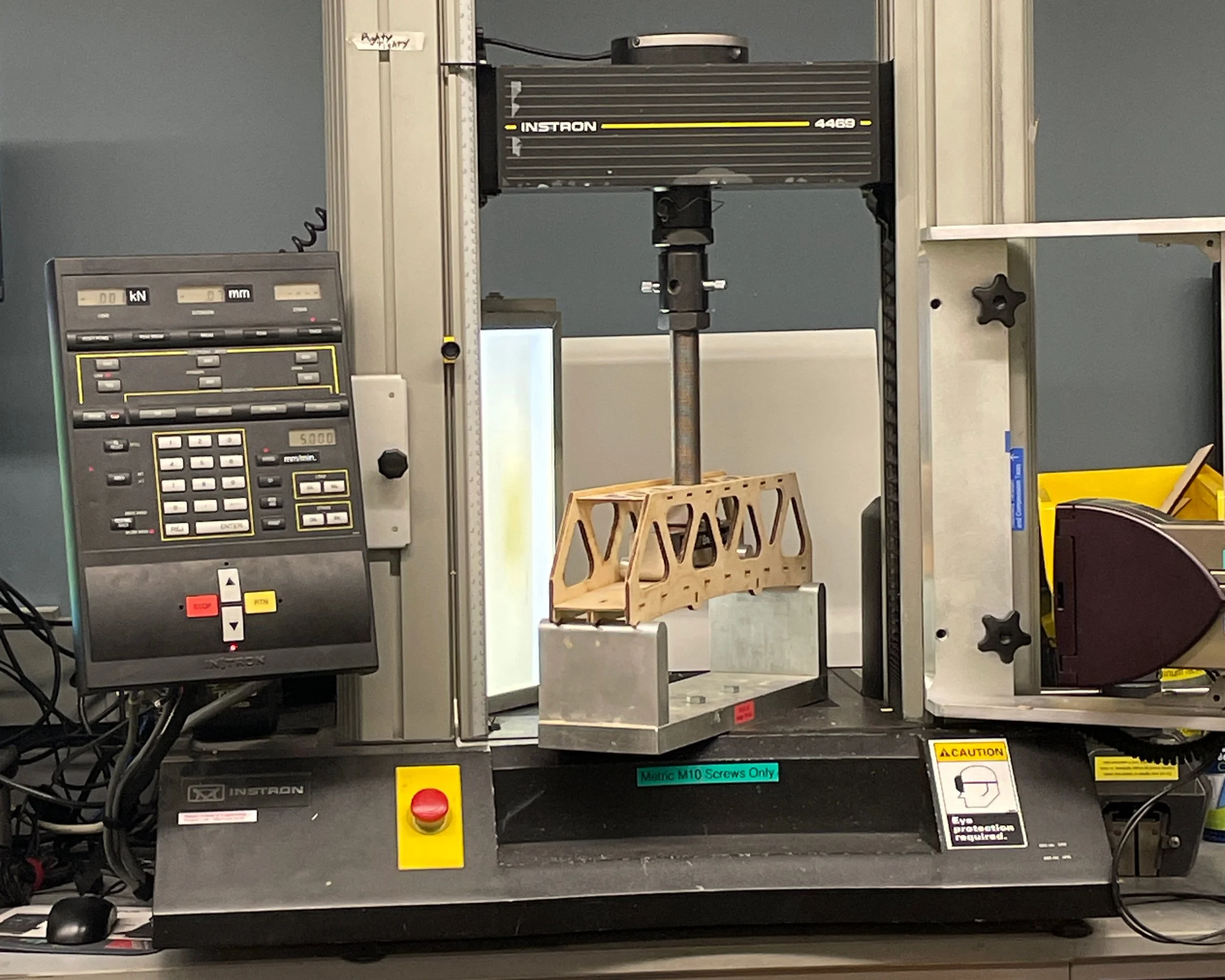The Bridge Project
FALL 2023, DARTMOUTH
BACKGROUND
In ENGS 33: Solid Mechanics, our seven-person team had to design, analyze, construct, and test a scale model of a wooden bridge. The bridge had to be made of Baltic Birch Plywood. It had to be able to hold at least 1 kN while spanning 0.4 m. Our design had to maximize strength while minimizing weight.
OUTCOMES
Our final bridge weighed 0.453 kg (0.99 lbs). Using Finite Element Analysis (FEA) on our CAD model, we predicted that it would be able to hold 5.3 kN (121.4 lbs). Our bridge was able to hold 7.7 kN (176.45 lbs) and had a maximum deflection of 0.58 mm (0.02 in).
This means that despite weighing less than a pound, our bridge could hold a person’s weight! Our bridge held the most weight out of all of the bridges that weighed less than a pound, meaning that we won our class competition!
Our bridge prior to testingOur bridge being tested on an Instron machineFor this project, I learned how to use SOLIDWORKS to conduct FEA for the CAD model of our bridge. I calculated the force on each truss by hand to determine what thickness of plywood we should use to construct the bridge. I cut the bridge pieces out on the laser cutter and assembled them with wood glue and clamps.
IMPACT
PROCESS
Click on the images below to enlarge them. Click on the "X” in the top right corner to close out of them.
Deciding on our design
Based on our research and bridges from past years, we decided to create a bridge with an arched deck and a simple truss.Analysis
Part of my calculations to determine necessary plywood thicknessA drawing of our bridge designUsing FEA to predict the bridge's maximum strength and deflection

